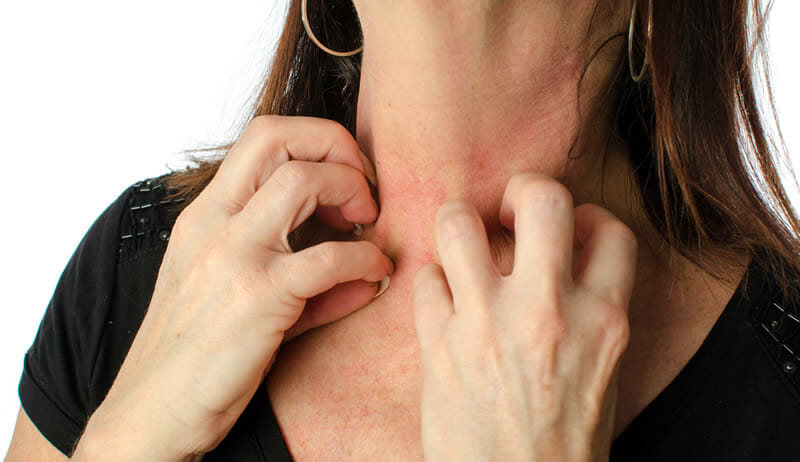Allergies can manifest in many different ways, and one of the most common symptoms is an allergic rash. An allergic rash is a rash that develops as a result of an allergic reaction to a particular substance or allergen. The symptoms of an allergic rash can vary depending on the allergen and the individual’s sensitivity to it. In this article, we will discuss the symptoms of an allergic rash and the treatment options available.
Symptoms of an Allergic Rash
An allergic rash can have a wide range of symptoms, but some of the most common symptoms include:
Itchy skin: The most common symptom of an allergic rash is itchy skin. The itchiness can be mild or severe, and it can be located in one specific area or all over the body.
Redness: An allergic rash often causes the skin to turn red or become inflamed. This can be mild or severe depending on the individual’s sensitivity to the allergen.
Hives: Hives are raised, red, and itchy welts that can appear on the skin as a result of an allergic reaction. They can be small or large and can appear anywhere on the body.
Swelling: An allergic rash can cause swelling in the affected area. This can be mild or severe and can be located in one specific area or all over the body.
Blisters: Some allergic rashes can cause blisters to form on the skin. These blisters can be filled with fluid and can be painful.
Crusting: An allergic rash can cause the skin to become dry and crusty. This can occur when the skin becomes irritated and irritated skin flakes off.
Treatment for an Allergic Rash
The treatment for an allergic rash will depend on the severity of the symptoms and the individual’s sensitivity to the allergen. Some of the most common treatment options include:
Topical creams and ointments: Topical creams and ointments can be used to relieve the symptoms of an allergic rash. These creams and ointments can contain anti-inflammatory ingredients, such as hydrocortisone, to reduce inflammation and itching.
Oral antihistamines: Oral antihistamines can be used to relieve the symptoms of an allergic rash. These medications work by blocking the action of histamine, which is a chemical that causes allergic reactions.
Steroids: Steroids can be used to relieve the symptoms of an allergic rash. These medications can be taken orally or applied topically.
Phototherapy: Phototherapy can be used to treat an allergic rash. This treatment involves exposing the affected area to ultraviolet light.
Immunomodulators: Immunomodulators can be used to relieve the symptoms of an allergic rash. These medications work by modulating the immune system.
Allergen avoidance: The best way to prevent an allergic rash is to avoid the allergen that causes it. This can be difficult, but it is essential to preventing future allergic reactions.
Conclusion
An allergic rash is a rash that develops as a result of an allergic reaction to a particular substance or allergen. The symptoms of an allergic rash can vary depending on the allergen and the individual’s sensitivity to it. Some of the most common symptoms of an allergic rash include itchy skin, redness, hives, swelling, blisters, and crusting. The treatment for an allergic rash will depend on the severity of the symptoms and the individual’s sensitivity to the allergen. Some of the most common treatment options include topical creams and ointments, oral antihistamines, steroids, and phototherapy.

 Home
Home Health
Health Diet & Nutrition
Diet & Nutrition Living Well
Living Well More
More












